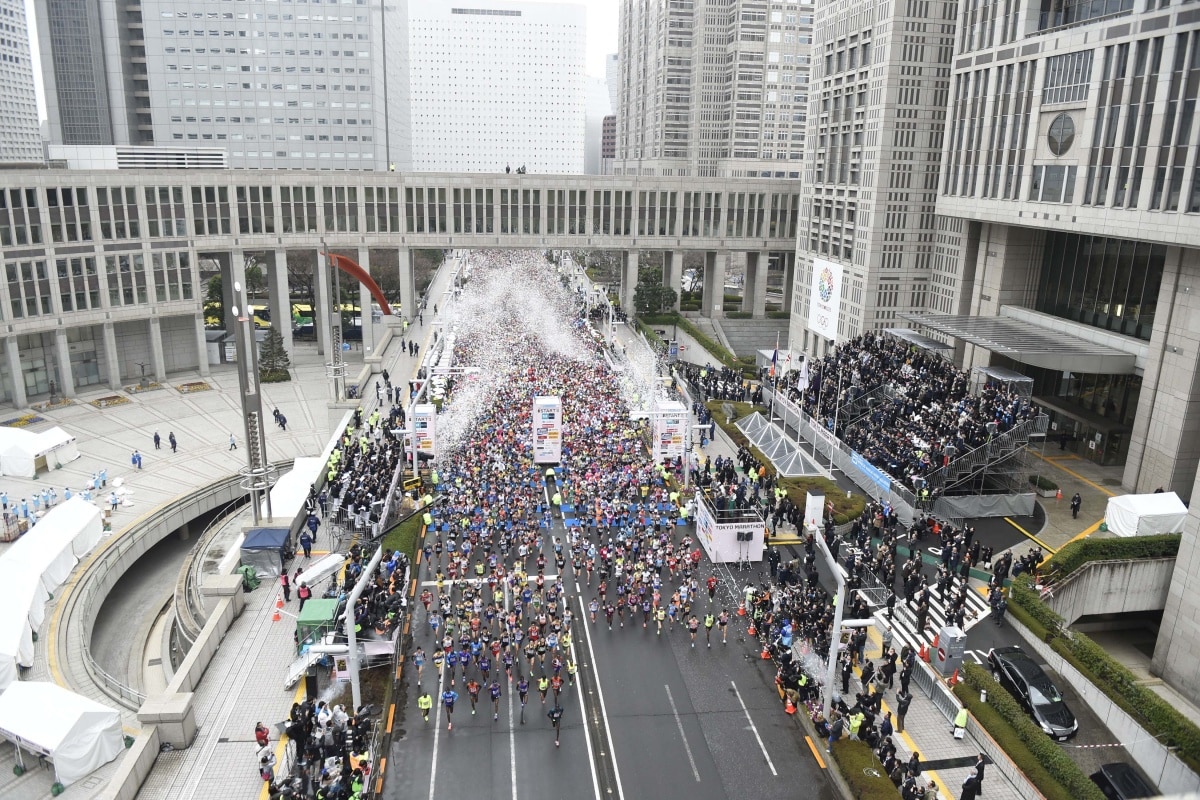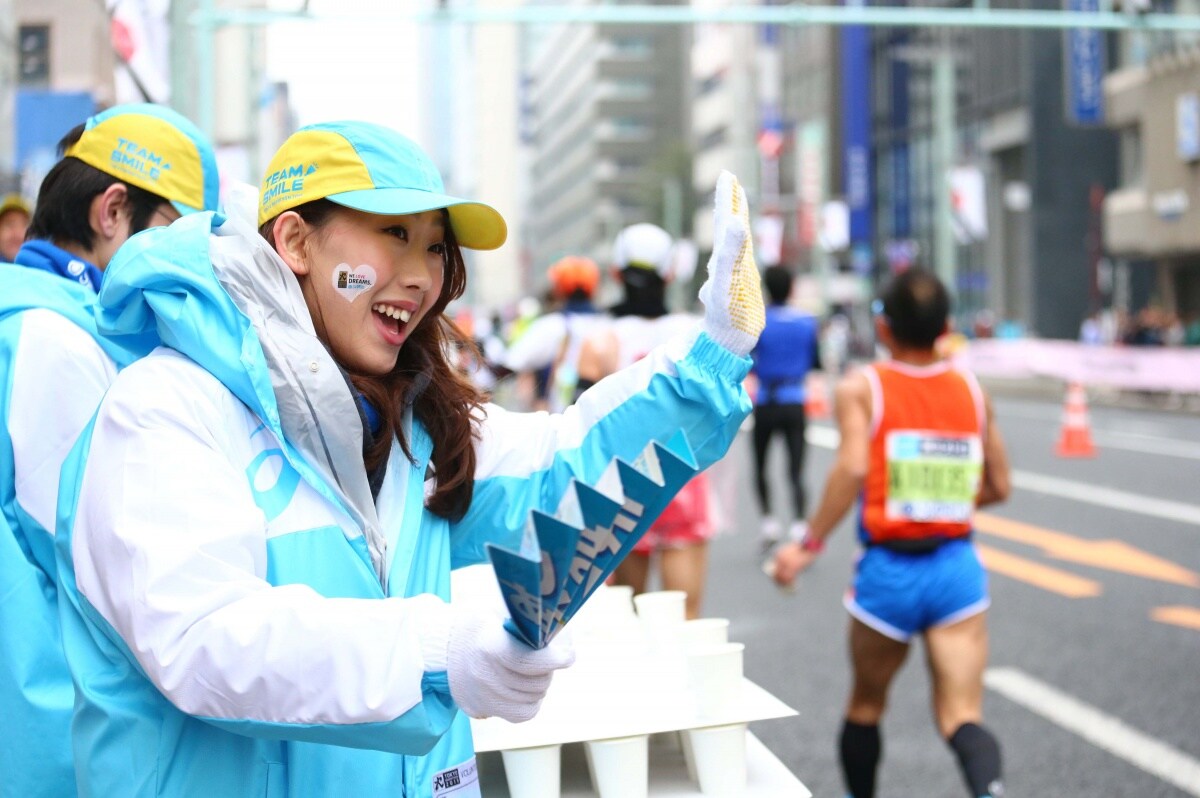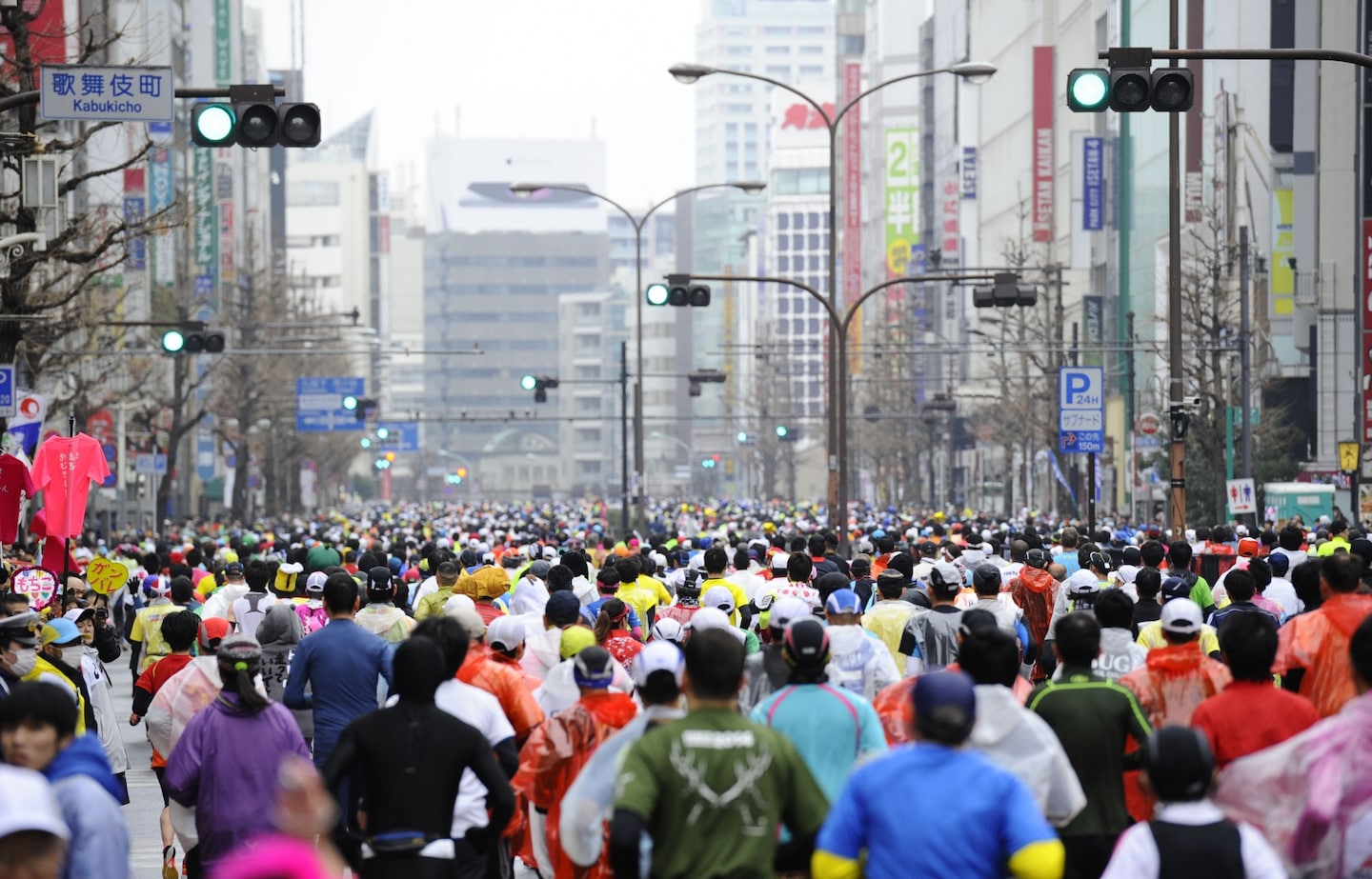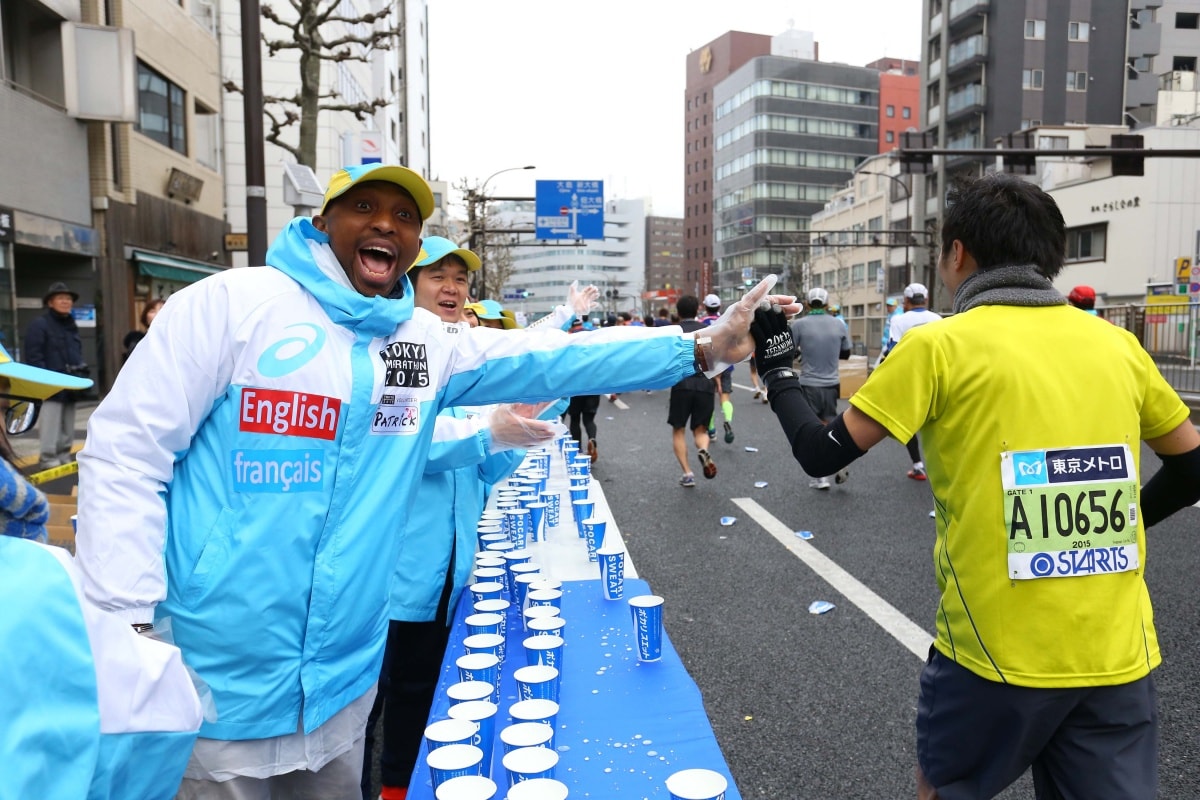Tokyo Marathon: The Day We Unite
Launched in 2007, the Tokyo Marathon celebrated its 10th anniversary in 2016. The race now draws up to 37,000 competitors, over 10,000 volunteers and more than 1.5 million spectators, and has become one of the world’s dominant marathons. (Photo ©Tokyo Marathon Foundation)
By Highlighting Japan
http://www.gov-online.go.jp/eng/publicity/book/hlj/html/201510/201510_02_en.html
In autumn 2012, in fact, the Tokyo Marathon became Asia’s first representative in the World Marathon Majors, the world’s largest marathon series, drawing alongside such races as the Virgin Money London Marathon and TCS New York City Marathon. In 2015, 5,317 of the competing runners, or nearly 15 percent, came from overseas. Volunteers provided support in five languages, and the race was broadcast in 65 countries. The marathon’s profile abroad continues to rise.
(Photo ©Tokyo Marathon Foundation)
http://www.gov-online.go.jp/eng/publicity/book/hlj/html/201510/201510_02_en.html
What is the secret behind the Tokyo Marathon’s rapid growth and its global popularity? Tadaaki Hayano, race director of the Tokyo Marathon, says: “It’s the hospitality of the Japanese people combined with the enthusiasm of the participants, set on the stage of the city of Tokyo. It’s the day that all of Tokyo unites as one.” He points to the logo on the 2016 marathon poster, featuring multicolored lines of various thicknesses intersecting inside a large circle. It represents the ideal behind Tokyo Marathon: the story of every single runner, volunteer and spectator woven into one giant tapestry.

http://www.gov-online.go.jp/eng/publicity/book/hlj/html/201510/201510_02_en.html
The Tokyo Marathon is now a destination for runners not only from Japan but from elsewhere in Asia, the Middle East, Europe and North and South America as well. The rate of acceptance, awarded by lottery, has decreased to less than 10 percent. The race course features a highly scenic tour of sights in Tokyo’s beautiful and well-maintained urban landscape: the Tokyo Metropolitan Government Office, the Imperial Palace, Tokyo Tower, the Ginza District, Asakusa and more, making it popular among runners from abroad.
(Photo ©Tokyo Marathon Foundation)

http://www.gov-online.go.jp/eng/publicity/book/hlj/html/201510/201510_02_en.html
A survey of participants after the race also revealed a strong appreciation for the constant cheers and support of the Japanese audience along the route, as well as the warm and courteous hospitality of marathon volunteers. Many runners bring their families to Japan to partake in the full array of events occurring before and after the marathon during Tokyo Marathon Week, seeing their journey to Japan as an opportunity for some serious shopping and tourism.
(Photo ©Tokyo Marathon Foundation)
The Tokyo Marathon is in a constant state of evolution. More and more multilingual documents, signs and volunteers are provided every year. To help spread Western-style charity culture throughout Japan, the race offers a number of charity entry slots through which donations can be made to such services as the Sports Legacy Program, which works to help people reach their dreams through sports. With an eye to the Tokyo Olympics and Paralympics coming in 2020, the marathon is aiming to build a sustainable sports culture.
(Photo ©Tokyo Marathon Foundation)





